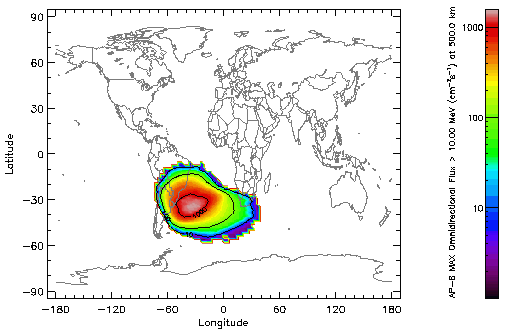Spacecraft operations are by nature complex and every satellite's operational
environment poses a range of potential risks, often a unique combination for a
given orbit. The implications of interruptions of operations, data transfer
and service provision, are serious, both in terms of cost and capability, thus
it is imperative to mitigate against all operational risks to the fullest possible extent.
Spacecraft Operation Background
The effects of space environmental factors must be considered on an event-by-event basis during the operations phase. For example, cosmic rays (GCRs) and solar energetic particles (SEPs) are known causes of single event upsets (SEUs) such as latch-ups in onboard electronics systems, often resulting in instruments and potentially platforms automatically going into safe mode. In the worst case, this can result in terminal damage. SEP events can disrupt telecommanding and data telemetry as a result of the interference in data systems, and the data itself is often worthless due to high levels of noise. Trapped radiation in the radiation belts leads to degradation of components as a result of prolonged dose, with processors, detectors and solar cells particularly vulnerable. A satellite passing through energetic charged plasma will experience a range of charging effects, both on the surfaces and internally within electrical systems, and these charge differentials can lead to sudden discharges and subsequent failure of electrical systems. Less energetic plasma also poses problems, with discharge and sputtering often leading to secondary electron emission and subsequent associated charging problems. Even the neutral atmosphere can be hazardous, with neutral atomic oxygen known to lead to surface erosion of the platform materials, potentially compromising the surface and leading to surface charging. A greater risk to surface integrity comes in the form of debris and micro-meteoroids which can compromise and puncture materials due to their high kinetic and potential energies.
Some examples of Space Weather data used on a routine basis within mission operations are the forecasts and nowcasts of: solar flares, solar and magnetospheric energetic particle fluxes, geomagnetic storms, and total electron content. These products based on measured data and modelling are known to be linked with effects such as radio frequency interference, SEUs/latch-ups, radiation damage, charging, and telemetry signal degradation.
 Flux of protons with energy greater than 10 MeV at 500 km altitude based on the NASA model AP-8 MAX. (
Flux of protons with energy greater than 10 MeV at 500 km altitude based on the NASA model AP-8 MAX. (